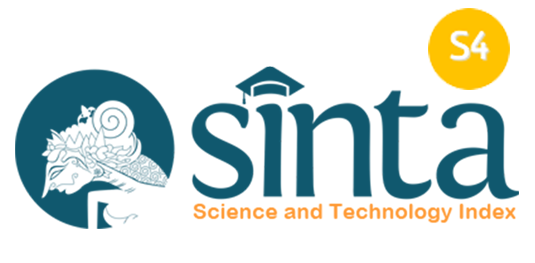Perceived Usefulness, Ease of Use, And Intention to Utilize Online Tools for Learning Among College of Education Students
Abstract
Keywords
Full Text:
PDFReferences
Ajayi, F. I., Osasona, A. V., and Oluyide, S. E. (2025). Effect of economic risk on regional financial integration in Africa. European Journal of Management, Economics and Business, 2(1), 3-12.
Aladesusi, G. A., and Akindiya, F. O. (2021). Development and evaluation of an instructional LiveBinders for learning selected computer studies concept in Ilorin Metropolis. JISTECH: Journal of Information Science and Technology, 1(2), 109-122.
Aladesusi, G. A., Issa, A. I., Abodunrin, S. O., Boris, O. A., Babalola, E. O., and Nuhu, K. M. (2021). Perception of undergraduate students on the utilization of social media to enhance learning in University of Ilorin. ASEAN Journal of Science and Engineering Education, 1(3), 183-192.
Alam, M. A. (2023). From teacher-centered to student-centered learning: The role of constructivism and connectivism in pedagogical transformation. Journal of Education, 11(2), 154-167.
Alfadda, H. A., and Mahdi, H. S. (2021). Measuring students’ use of zoom application in language course based on the technology acceptance model (TAM). Journal of Psycholinguistic Research, 50(4), 883-900.
Almodaires, A. A., Almutairi, F. M., and Almsaud, T. E. (2021). Pre-Service teachers' perceptions of the effectiveness of microsoft teams for remote learning. International Education Studies, 14(9), 108-121.
Alsabawy, A. Y., Cater-Steel, A., and Soar, J. (2016). Determinants of perceived usefulness of e-learning systems. Computers in Human Behavior, 64, 843-858.
Arlianti, N., Hastin, M., Ramatni, A., Wahyuni, L., and Susmita, N. (2022). Effectiveness of learning using application Zoom on student learning outcomes during COVID-19 at STKIP Muhammadiyah Sungai Penuh. Linguistics and Culture Review, 6(S3), 308-319.
Boubker, O. (2024). From chatting to self-educating: Can AI tools boost student learning outcomes?. Expert Systems with Applications, 238, 121820.
Choukaier, D. (2024). Enhancing English as A Foreign Language (EFL) instruction through digital teaching platforms: Analyzing the impact of microsoft teams, zoom, and google meet on communication and participation. Educational Administration: Theory and Practice, 30(6), 2404-2418.
Davis, F. D. (1989). Technology acceptance model: TAM. Al-Suqri, MN, Al-Aufi, AS: Information Seeking Behavior and Technology Adoption, 205, 219.
Elumalai, K. V., Sankar, J. P., Kalaichelvi, R., John, J. A., Menon, N., Alqahtani, M. S. M., and Abumelha, M. A. (2021). Factors affecting the quality of e-learning during the COVID-19 pandemic from the perspective of higher education students. COVID-19 and Education: Learning and Teaching in a Pandemic-Constrained Environment, 189(3), 169.
Fatani, T. H. (2020). Student satisfaction with videoconferencing teaching quality during the COVID-19 pandemic. BMC Medical Education, 20, 1-8.
Lowenthal, P. R., and Dennen, V. P. (2017). Social presence, identity, and online learning: Research development and needs. Distance Education, 38(2), 137-140.
Meşe, E., and Sevilen, Ç. (2021). Factors influencing EFL students’ motivation in online learning: A qualitative case study. Journal of Educational Technology and Online Learning, 4(1), 11-22.
Muawanah, U., Marini, A., and Sarifah, I. (2023). Exploring the nexus of technology availability, child-friendly interface design, early childhood digital literacy, cognitive skills, and creativity in language learning in the context of Banten Javanese language. International Journal of Current Science Research and Review, 6, 12.
Nemec, O., Putiš, M., Bačík, P., Ružička, P., and Németh, Z. (2020). Metamorphic conditions of Neotethyan Meliatic accretionary wedge estimated by thermodynamic modelling and geothermobarometry (Inner Western Carpathians). Minerals, 10(12), 1094.
Rahayu, R. P., and Wirza, Y. (2020). Teachers’ perception of online learning during pandemic COVID-19. Jurnal penelitian pendidikan, 20(3), 392-406.
Taghizadeh, M., and Hajhosseini, F. (2021). Investigating a blended learning environment: Contribution of attitude, interaction, and quality of teaching to satisfaction of graduate students of TEFL. The Asia-Pacific Education Researcher, 30(5), 459-469.
Zainuddin, Z. (2024). Integrating ease of use and affordable gamification-based instruction into a remote learning environment. Asia Pacific Education Review, 25(5), 1261-1272.
DOI: https://doi.org/10.17509/ijomr.v5i1.81387
Refbacks
- There are currently no refbacks.
Copyright (c) 2025 Kantor Jurnal dan Publikasi, Universitas Pendidikan Indonesia (UPI)

This work is licensed under a Creative Commons Attribution-ShareAlike 4.0 International License.
Indonesian Journal of Multidiciplinary Research (IJOMR) is published by Universitas Pendidikan Indonesia (UPI)















